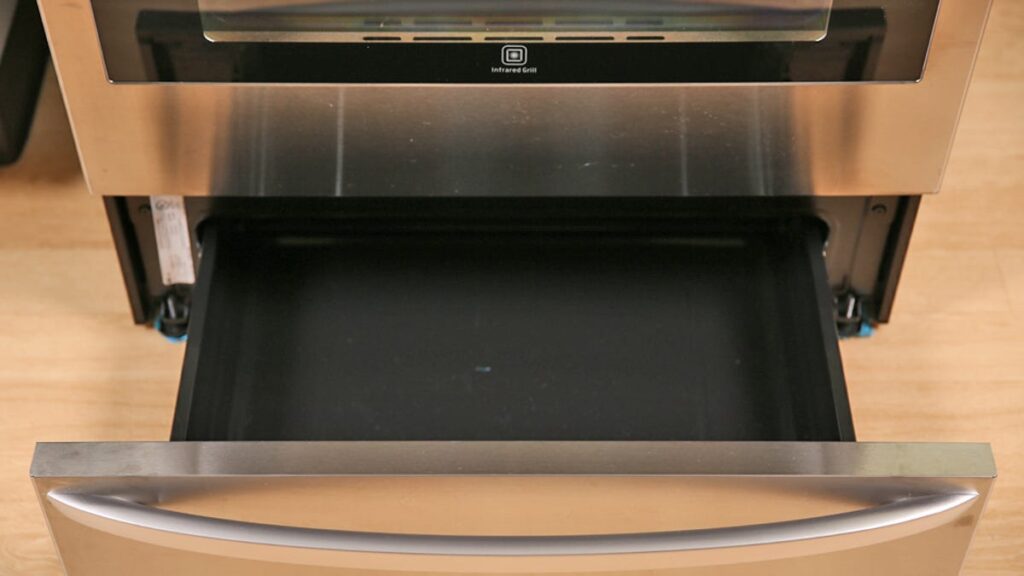If you’re like me, you’ve probably used the drawer beneath your oven to stash pots and pans and kitchen gear that won’t fit elsewhere. But have you ever stopped to wonder what that drawer is actually meant for? Was it designed purely as a storage convenience, or does it serve a more intentional, useful purpose? The real answer might surprise you.
Maybe the drawer under your oven is actually made for storage and maybe it’s not. Below is a guide to help you figure out the type of drawer you may have in your kitchen.
Read More: Clever Cleaning Hacks for the Hardest-to-Reach Crevices in Your Kitchen
3 functions of your oven’s bottom drawer
Warming drawer
A warming drawer is easy to identify. Take a look at the buttons on your oven. If one of them is labeled “Warming Drawer” then that’s exactly what you have. Anytime you need to warm a pie or a loaf of bread — or you just want to keep dishes warm while the rest of the meal finishes cooking — pop it into the warming drawer and push the warming button.
Broiler
If you have an oven heated with natural gas, the drawer is typically a broiler. To be sure, pull open the door. If it looks more like a retractable pan than a drawer, then it’s a broiler.
Think of the broiler as an extra cooking area. It’s best for toasting or browning foods like casseroles or breads. Any item placed in the broiler will burn quickly, though, so check on it every couple of minutes.
Storage drawer
If there isn’t a warming button and the area looks like a deep, empty drawer, then you probably have a storage drawer. As per a recent Reddit discussion, many people are unsure about what to keep in this space. This is a good place to store cast iron pots and pans, because the warmth from your oven will help keep them rust free. Just be sure not to store plastic items in this drawer, because they may become warped due to residual heat.
Likewise, some older ovens have little insulation and may heat your metal cookware when the oven is on. As a precaution, always use oven mitts to remove cookware during or after your oven has been in use.
Read the full article here

